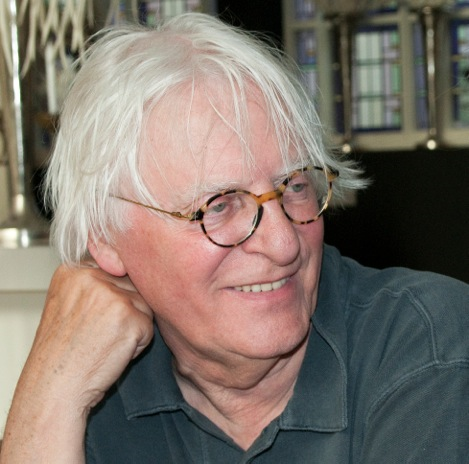In Memoriam Ger van Elk
News — Aug 19, 2014
Van Elk is internationally considered to be one of the founders of conceptual art. In 1969, his work found widespread acclaim when he participated in the seminal group exhibitions When Attitudes Become Form in Bern and Op losse schroeven / Situaties en cryptostructuren at the Stedelijk Museum Amsterdam. The latter exhibition, in which artists investigated and pushed the parameters of what a museum could be, formed the introduction of conceptual art in the Netherlands. The study of his provocative work in the exhibition, Apparatus scalas dividens, or ‘apparatus to divide stairs’ when he installed a length of canvas partitioning the grand steps in the historic building, was added to the Stedelijk collection in 2010. The work of Ger van Elk also featured prominently in 2009, in the exhibition In & Out of Amsterdam, mounted by the MoMA in New York, which was dedicated to the pioneers of conceptual art.
After 1969, the Stedelijk maintained a close relationship with Van Elk. The museum holds over 50 works by the artist, and over the years his art has been highlighted by many exhibitions, such as his solo presentation in 1974, Fotografie in Nederland in 1978, Door beeldhouwers gemaakt in the same year, Wat Amsterdam betreft... in 1985, in Wanderlieder in 1991 and in Conceptuele kunst in Nederland en België 1965-1975 in 2002.
In 2010, prior to the reopening of the Stedelijk, his Well-Polished Floor Sculpture (1969-1980) was executed once again; this was the third time the piece had been produced in this museum. During Temporary Stedelijk 2 in 2011, work by Van Elk featured in both the collection presentation and in Recollections, an exhibit that reconsidered the influence of Op losse schroeven. After the Stedelijk reopened 2012 the work of Ger van Elk was included in great depth in the installation of the permanent collection of the Stedelijk. A gallery devoted to the work of Ger van Elk is currently part of the exhibition Bad Thoughts – Collection Martijn and Jeannette Sanders. The exhibition runs at the Stedelijk until 9 November.
Ger van Elk graduated from the Instituut voor Kunstnijverheidsonderwijs, now the Rietveld Academy. He also studied art history in Los Angeles, where he lived for some time, and in Groningen. Reflecting on (art) history was to be a recurrent theme throughout his oeuvre. In the 1960s, van Elk signed the ‘A-dynamisch’ manifesto, with which he, and the Dutch artists Wim T. Schippers and Bob Wesdorp, argued for the production of art works devoid of the slightest trace of the artist’s personal expression. Later, he founded the Internationale Instituut voor Herscholing van Kunstenaars along with noted Dutch artists Jan Dibbets and Reinier Lucassen.
Ger van Elk explored photographic illusion and painterly abstraction, both of which were able to infuse an image or sculpture with multiple meanings. Even in the early ’70s, he was aware of photography’s inherent ability to manipulate. Van Elk reversed the conventions of the medium, using photography not to register reality, but to create an illusion. He then used this photographic illusion to question the ‘artist’s obsession with creating a new reality’. In an interview given in 1977, he said “What I want is a realistic depiction of unrealistic situations.”
Van Elk also aimed to rid art of its airs of grandeur. During his early years, van Elk declared that art should not be vital and expressive but feeble, and without frills. The vital ingredients to achieve this were parody and ‘shoddy materials’. He sought to provoke, but always with considerable wit. Rather than destroy, Van Elk aspired to disrupt – often with a smile. In an interview with the Dutch paper the NRC in 1971, he said: “My mother always warned me about artists. She thought they were bad people. I never wanted to be an artist.”
Van Elk taught at Ateliers '63 in Haarlem and at the École des Beaux-Arts in Paris. His stubborn way of working, utilizing quotes and humorous reflections on art history, were influential and lent his work an urgency – not only in the heyday of conceptual art but also in the ’80s, when quotation and parody were tried and tested strategies.
Ger van Elk received numerous distinctions for his work such as the David Röell Award of the Prins Bernhard Cultuurfonds in 1982, the J.C. van Lanschot Award for Sculpture in 1996 and the Oeuvre Prize of the Foundation for Visual Art, Design and Architecture in 2004.

